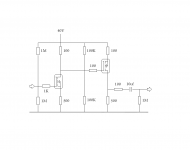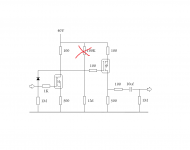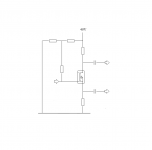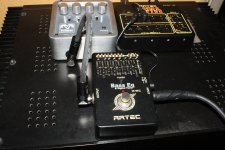Some people (yourself included) seem to like the lower qualty sound that valves give you, there's no accounting for taste..
Nigel, you draw too fast conclusions
Nigel, please notice I said bass guitar only
not quite the same thing as guitar
I was referring only to bass, although the exact same thing applies to guitar as well.
Nigel, you draw too fast conclusions
Hardly, as you've been discussing valves throughout this thread, and endless weird configurations of valves and FET's.
Presumably you're looking for lower quality sound for a bass?.
Presumably you're looking for lower quality sound for a bass?.
depends what you mean by quality
distortion seem to be a key element of good quality guitar sound
but the question is, how to differ between low quality and high quality distortion
and the difference really is there, we know that
but its still distortion
and often exstreme
depends what you mean by quality
distortion seem to be a key element of good quality guitar sound
Except we're talking bass, not guitar - remember?
but the question is, how to differ between low quality and high quality distortion
and the difference really is there, we know that
but its still distortion
and often exstreme
There's no such thing as 'quality' distortion, by definition it lowers quality. Some guitarists want distortion for some styles of playing, I've no problem with that at all, in fact I'm all for it - heavy metal would be a sad thing wihout it
But it's far rarer for bass, not many want distorted bass, even the heavy metal crowd.
But it's far rarer for bass, not many want distorted bass, even the heavy metal crowd.
thats my point
bass guitar needs only small amounts of distortion
and not really audible when playing with others
a very different from what a guitarist needs
non distorted is really not a possible option, is it ?
thats my point
bass guitar needs only small amounts of distortion
No, it's needs none at all, unless you're aiming for some specific effect?.
and not really audible when playing with others
a very different from what a guitarist needs
non distorted is really not a possible option, is it ?
Distortion well below the range of hearing is easily possible, and most bass amps provide that.
No, it's needs none at all, unless you're aiming for some specific effect?.
Distortion well below the range of hearing is easily possible, and most bass amps provide that.
what instrument are you playing
ahhh
found this on Alan Kimmel site
Because most MOSFETs are enhancement-mode types and cannot be self biased, we must supply fixed bias to it. This does not compromise the performance in any way. We want the MOSFET's source terminal lobe at about half the B+; therefore, our fxed bias must also be half the B+. We can derive this bias voltage by using a simple voltage divider of two equal-value (say, 220k)) resistors in series. Connect one end of the voltage divider to B+ and the other end to ground with a 1-5uF capacitor across the lower resistor.
The junction of the two resistors will be the fixed bias supply point to which gate resistor Rg2 will he connected. This simple arrangement has given excellent results. However, if you do not want a voltage divider, you can use a zener string for Q1's fixed bias voltage source. Operate zeners at about 20% of their maximum current rating and use a 10uF capacitor to bypass the zener string. If you build a stereo pair or a push/pull pair of Mu Stages, the same voltage divider (or zener string) can serve both. No interaction will result.
found this on Alan Kimmel site
Because most MOSFETs are enhancement-mode types and cannot be self biased, we must supply fixed bias to it. This does not compromise the performance in any way. We want the MOSFET's source terminal lobe at about half the B+; therefore, our fxed bias must also be half the B+. We can derive this bias voltage by using a simple voltage divider of two equal-value (say, 220k)) resistors in series. Connect one end of the voltage divider to B+ and the other end to ground with a 1-5uF capacitor across the lower resistor.
The junction of the two resistors will be the fixed bias supply point to which gate resistor Rg2 will he connected. This simple arrangement has given excellent results. However, if you do not want a voltage divider, you can use a zener string for Q1's fixed bias voltage source. Operate zeners at about 20% of their maximum current rating and use a 10uF capacitor to bypass the zener string. If you build a stereo pair or a push/pull pair of Mu Stages, the same voltage divider (or zener string) can serve both. No interaction will result.
what instrument are you playing
I don't play anything, but my daughter plays bass, piano, keyboards, flute, guitar, piano accordian, drums, and she sings - and has gigged on them all.
I just do the PA
I've seen, used, and repaired MANY bass amps and combos, they don't add distortion.
Often we just DI the bass directly in to the PA, no on-stage monitors either.
ok
then you should know that distortion is part of the sound of a musical instrument
and with electric instruments, you rely on electronics
and there nothing goes completely without some amount of distortion
PA should not distort, ofcourse
neither should PA microphone amps, recording gear, etc
but music itself is 'distortion', thats the point
fore some time I have also claimed that a good amp can be judged by the way its able to reproduce any kind of distortion fed into it
and that goes even fore hifi, or especially there
because music is full of 'distortion'
then you should know that distortion is part of the sound of a musical instrument
and with electric instruments, you rely on electronics
and there nothing goes completely without some amount of distortion
PA should not distort, ofcourse
neither should PA microphone amps, recording gear, etc
but music itself is 'distortion', thats the point
fore some time I have also claimed that a good amp can be judged by the way its able to reproduce any kind of distortion fed into it
and that goes even fore hifi, or especially there
because music is full of 'distortion'
biasing mosfets
some 'easy reading'
http://ux.brookdalecc.edu/fac/engtech/andy/engi242/powerpoint/fet_dc_biasing.pdf
some 'easy reading'
http://ux.brookdalecc.edu/fac/engtech/andy/engi242/powerpoint/fet_dc_biasing.pdf
funny, but you can actually have two outputs, unity gain, and one with gain
that might be useful
Isnt one out inverted? Make them both unity and you can have a balanced output. ( a DI box)
Isnt one out inverted?
seems you are right
I didnt know that
I was missing a reg in a heater power supply kit I bought long time ago from Broskie
of course he said, "anything else you want"

so I ordered the new kit, aikido mono solo, all in one with onboard supply
with a couple of ecc82 I hope it will make a nice frontend '12db-booster'
but Im all ears if theres any other suggestion how to use it
so I ordered the new kit, aikido mono solo, all in one with onboard supply
with a couple of ecc82 I hope it will make a nice frontend '12db-booster'
but Im all ears if theres any other suggestion how to use it
hmm, would 12AY7/6072 be a good choice
- Status
- This old topic is closed. If you want to reopen this topic, contact a moderator using the "Report Post" button.
- Home
- Live Sound
- Instruments and Amps
- Switchable Hi-Z input impedance, how ?


 and there might be something about loosing gain into low impedance load
and there might be something about loosing gain into low impedance load 

 this setup works quite well
this setup works quite well 